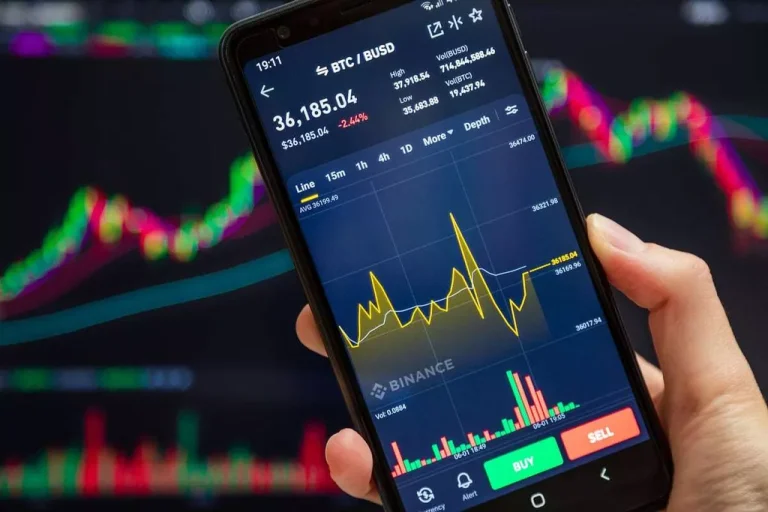AMMs function on decentralized exchanges, which do not depend on intermediaries or central authorities to execute trades. This allows permissionless buying and selling, where anyone with an web connection can take part in buying and promoting crypto belongings. Also aiming to increase liquidity on its protocol, DODO is using a mannequin often identified as a proactive market maker (PMM) that mimics the human market-making behaviors of a standard central restrict order guide. Ultimately, this facilitates extra environment friendly buying and selling and reduces the impairment loss for liquidity providers. One of the first considerations for liquidity providers in AMMs is impermanent loss. This phenomenon occurs when the worth of an asset within the liquidity pool diverges from the market price.

When the latter order is giant sufficient, the bonding curve implies that the malicious dealer’s promote order shall be executed at a higher value than his purchase order, thus generating a revenue. Such front-running behaviour is especially engaging to large validators because they’ve a higher chance to “win” the next block and time their front-running trades optimally. With any AMM, when the worth of its property shifts significantly in exterior markets, merchants can use arbitrage to profit off the AMM, which results in a loss for liquidity providers. The public sale mechanism is intended to return more of that value to liquidity suppliers and more rapidly deliver the AMM’s prices back into stability with external markets. Liquidity providers (LPs) deposit their belongings into these pools and are rewarded with a fraction of the fees generated on the AMM. This follow, generally known as yield farming, incentivizes LPs to contribute to the liquidity pool.
Constantine
In distinction, AMM exchanges crowdsource liquidity and use sensible contracts to execute trades. These AMM exchanges are based on a continuing operate, where the combined asset reserves of buying and selling pairs should remain unchanged. In non-custodial AMMs, user deposits for buying and selling pairs are pooled inside a sensible contract that any trader can use for token swap liquidity. Users trade towards the smart contract (pooled assets) versus instantly with a counterparty as in order guide exchanges. Liquidity in traditional or centralized exchanges (CEX) is offered by market participants – consumers and sellers. The buy orders are stuffed by matching them with the sell orders in the order e-book.

Automated market makers were first launched by Vitalik Buterin in 2017 in his publish about on-chain market makers. There are projects that use hybrid approaches, combining elements of various AMM DeFi models to optimize for specific asset characteristics. Some perform as a mixture of CPMM and CSMM, while others incorporate a customizable utility function to maintain balance inside a pool. LP Tokens use a special type of forex code in the 160-bit hexadecimal “non-standard” format. The remainder of the code is a SHA-512 hash, truncated to the first 152 bits, of the 2 belongings’ forex codes and their issuers.
In Style Amm Platforms
If someone displaces you, you get part of your bid back relying on how a lot time remains. As long as you hold an energetic auction slot, you pay a reduced buying and selling charge equal to 1/10 (one tenth) of the normal trading payment when making trades in opposition to that AMM. On a decentralized exchange like Binance DEX, trades occur directly between person wallets. If you promote BNB for BUSD on Binance DEX, there’s someone else on the opposite side of the trade buying BNB with their BUSD. Traditional market making usually works with corporations with vast sources and complex methods.
Instead of relying on the traditional buyers and sellers in a monetary market, AMMs keep the DeFi ecosystem liquid 24/7 through liquidity swimming pools. Graph A illustrates this AMM with an example of a liquidity pool comprising Tether and Ether. When a dealer https://www.xcritical.in/ wishes to provide liquidity, they want to deposit Tether and Ether in proportion to the 2 cryptoassets’ dollar values within the pool (which is one at step ). The liquidity-provider’s declare on the pool is proportional to its contribution.
Yield farming is a well-liked decentralized monetary instrument in DeFi that yields capital by extracting worth from providing liquidity to decentralized exchanges. In 2021, AMM-based exchanges are processing billions of dollars value of on-chain transactions daily. Uniswap, Sushi, Balancer, and Curve Finance are a few high crypto decentralized exchanges using the AMM mannequin to ship DeFi to the lots.
Good Contracts
DeFi (Decentralized Finance) has been a sizzling topic lately, with its promise of democratizing and enhancing the normal monetary system by way of peer-to-peer buying and selling. However, whereas DeFi has caused many inventions and opportunities, it also faces challenges, corresponding to low liquidity and excessive value negotiation costs as a outcome of using good contracts. An automated market maker (AMM) is a system that provides liquidity to the exchange it operates in through automated buying and selling. They enable primarily anyone to create markets seamlessly and effectively. While they do have their limitations in comparability with order e-book exchanges, the general innovation they carry to crypto is invaluable.
Instead of relying on an middleman to offer liquidity, decentralized exchanges (DEX) use automated market maker to facilitate trades through pricing algorithms and liquidity pools. Automated market makers (AMMs) are a sort of decentralized change (DEX) that use algorithmic “money robots” to make it simple for individual traders to purchase and sell crypto belongings. Instead of trading instantly with other folks as with a conventional order e-book, users trade directly via the AMM. Automated market makers (AMM) are decentralized exchanges that pool liquidity from users and worth the belongings throughout the pool utilizing algorithms. The actual mechanics vary from exchange to change, but typically, AMMs supply deep liquidity, low transaction fees, and 100 percent uptime for as many users as possible.
The opinions and views expressed in any Cryptopedia article are solely these of the author(s) and don’t reflect the opinions of Gemini or its management. A certified professional must be consulted prior to creating monetary selections. The AMM also costs a proportion buying and selling charge on high of the exchange fee. Forex is a platform the place everyone, from an enormous corporation to a beginner trader, can begin making a profit from their funds. The Forex market is so gainful, due to its exceptionally high liquidity.
As AMMs function with out human interplay, there is a possibility of bugs and glitches occurring with smart contracts. These can result in issues such as incorrect pricing or failed transactions. While developers constantly work to identify and fix these points, they’ll nonetheless happen, causing inconvenience and potential losses for users.
The platform offers a spread of liquidity pools for users to earn rewards in CAKE tokens. Hybrid CFMMs enable extraordinarily low value influence trades through the use of an exchange price curve that is mostly linear and becomes parabolic only as quickly as the liquidity pool is pushed to its limits. Liquidity providers earn extra in charges (albeit on a decrease fee-per-trade basis) because capital is used extra efficiently, whereas arbitrageurs still revenue from rebalancing the pool. When the move of funds between the 2 assets in a pool is relatively active and balanced, the fees present a supply of passive earnings for liquidity providers. However, when the relative price between the property shifts, the liquidity providers can take a loss on the currency threat .
An AMM units its change price based on the balance of assets in the pool. When you trade in opposition to an AMM, the exchange fee adjusts based mostly on how a lot your commerce shifts the steadiness of belongings the AMM holds. As its supply of 1 asset goes down, the value of that asset goes up; as its supply of an asset goes up, the value of that asset goes down. An AMM offers usually better exchange rates when it has bigger overall amounts in its pool.
What’s An Automatic Market Maker (amm)?
Additionally, users can earn rewards by staking their crypto into liquidity swimming pools. When a user desires to trade on the decentralized trading platform, they interact immediately with the AMM, swapping one token for another at a worth determined by the liquidity pool’s algorithm. One integration with 0x unlocks 1000’s of tokens on the most well-liked blockchains and aggregated liquidity from 100+ AMMs and private market makers. Learn how one can leverage Swap API to entry deep liquidity without the infrastructure overhead.

To address these issues, new trade protocols generally identified as Automated Market Makers (AMMs) have emerged. In this article, we will discover the concept of AMMs and how they’ll improve the DeFi landscape for both initiatives and traders. A Bollinger Band is an indicator utilized in technical analysis that tracks an asset and gives merchants insight into whether or not it’s oversold or overbought. Be cautious when depositing funds into an AMM, and make sure you understand the implications of impermanent loss. If you’d prefer to get a complicated overview of impermanent loss, learn Pintail’s article about it. The means AMMs handle liquidity is just like smart order routing methods.
- An AMM units its trade rate based mostly on the stability of assets within the pool.
- That stated, liquidity-providers can undergo losses if the relative worth of the two cryptoassets on other exchanges diverges substantially from that implied by the bonding curve.
- With extra time and innovation, AMMs are bound to evolve to improve the trading experience in the global crypto markets.
- While its team stays comparatively anonymous, the platform’s success and popularity converse for themselves.
They achieve this by being keen to step in as the go-to purchaser for an asset at prevailing market prices. The major distinction between order books and AMMs is that the pricing and order matching are automated in AMMs. A pricing algorithm in AMMs determines the prices at which belongings are traded. On the opposite hand, order books facilitate worth discovery by permitting buyers and sellers to set the prices at which they are keen to trade an asset. Additionally, SushiSwap’s use of smart contracts ensures that trades are executed rapidly and efficiently with out the need for a centralized intermediary. Its token, SUSHI, is earned through liquidity mining and can be used for voting on governance proposals.

